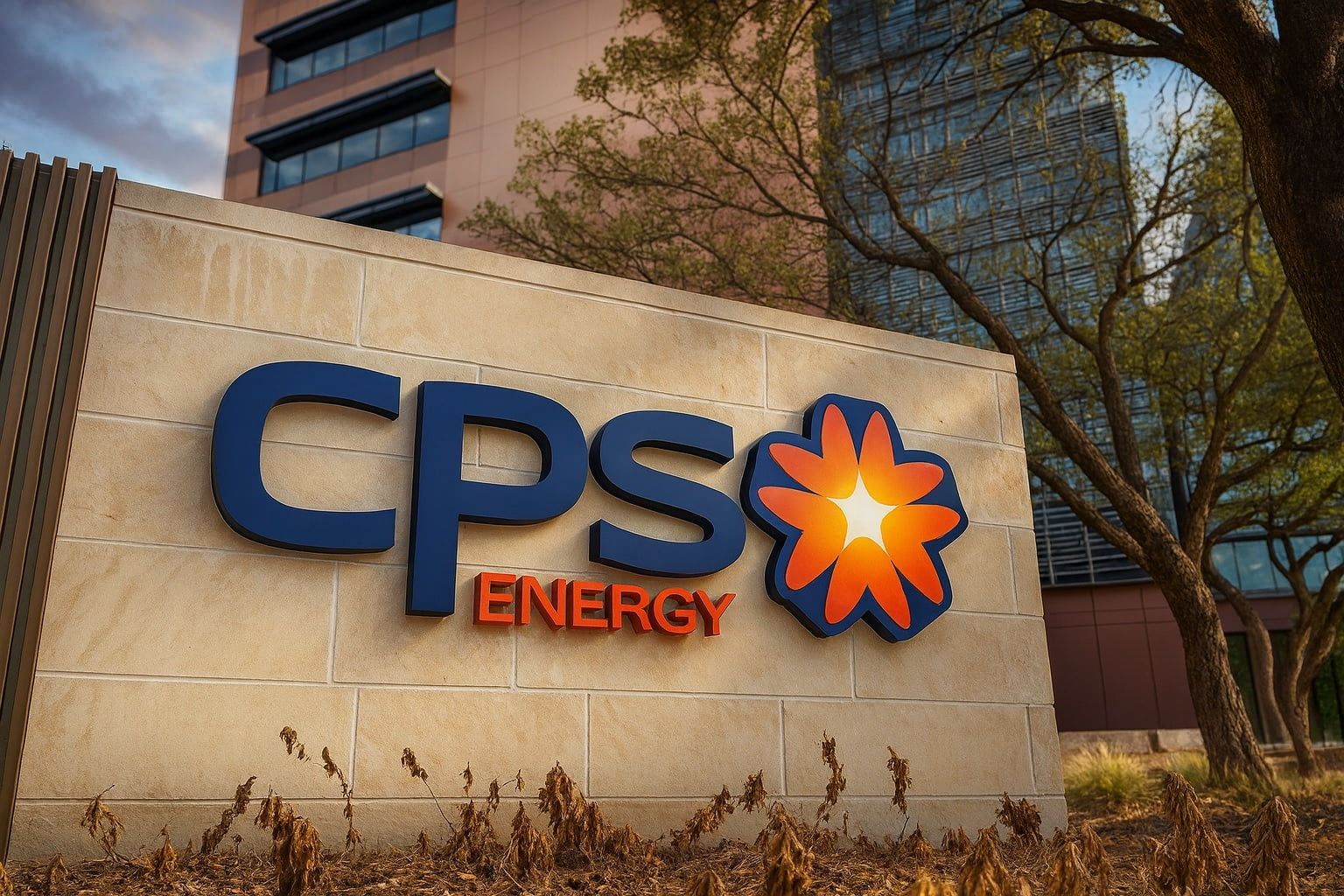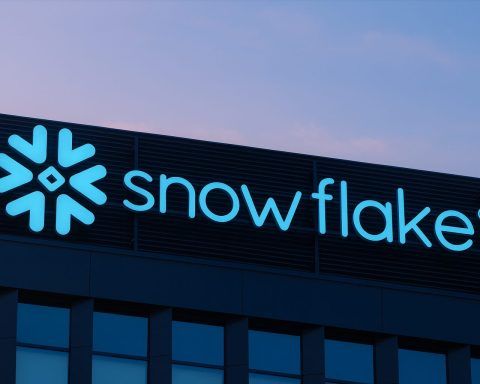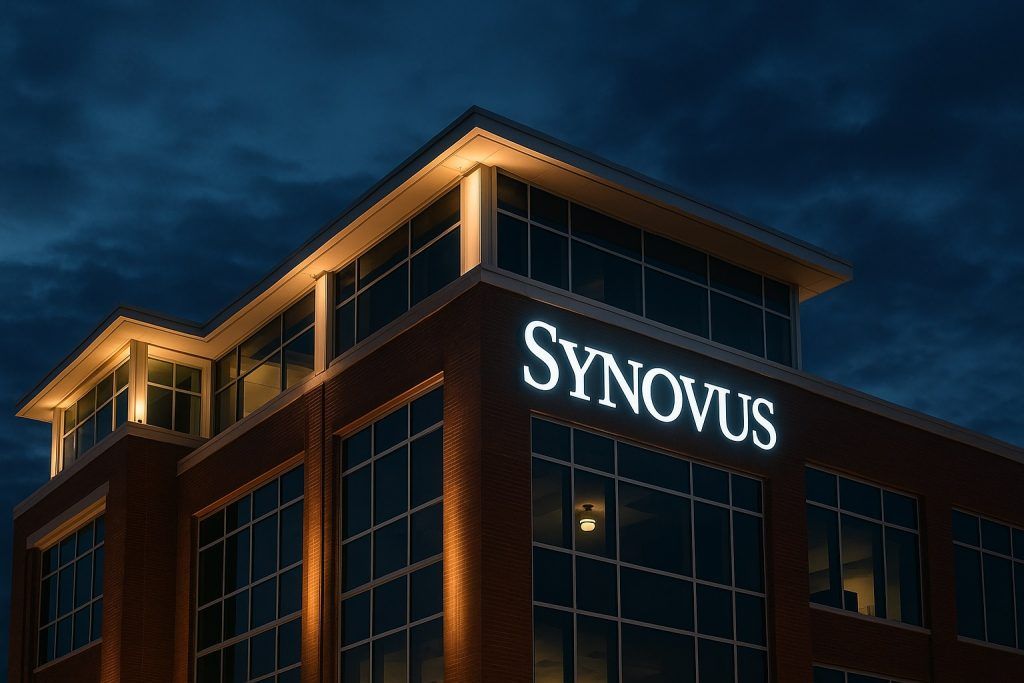San Antonio woke up this week to a mix of physical power disruptions, digital outages and big promises about winter readiness. Here’s how it all fits together for CPS Energy customers.
As commuters in and around downtown San Antonio dealt with lane closures and slowdowns after a vehicle knocked down power lines, CPS Energy officials were simultaneously assuring residents that the local grid is better prepared than ever for winter — even as a global internet outage briefly took the utility’s website offline.
Taken together, the last 48 hours have offered a real‑world stress test of how San Antonio’s power system, roads and digital infrastructure hold up under pressure.
Crash Near Downtown Knocks Out Power and Closes Part of South Flores
Early Monday morning, November 17, a vehicle struck power infrastructure near South Flores Street and Lone Star Boulevard, just south of downtown. CPS Energy reported that the crash brought down a power line and triggered a small outage affecting roughly 30 customers in the area. Power went out shortly before 2:30 a.m., and the utility’s online outage map estimated restoration around midday Monday. [1]
Traffic quickly became part of the story. A separate traffic monitoring service, SigAlert, logged the incident around 7:12 a.m. and reported that a stretch of South Flores between Lone Star Boulevard and East Lachapelle was shut down, with vehicles crawling through the area at just 12–20 mph. Drivers were urged to divert to Nogalitos or Probandt to avoid delays. [2]
As of CPS Energy’s last update on Monday, crews were on site working to safely remove debris and re‑energize the line. The utility did not report any injuries related to the crash, and the outage remained limited to a small group of customers — a reminder that even minor vehicle accidents can have outsized effects on both traffic and neighborhood power reliability. [3]
CPS Energy Says It’s Ready for Winter — With 3,000 More Megawatts on Tap
The timing of the outage is particularly striking given what CPS Energy officials told their board just hours earlier: that the city‑owned utility has substantially bulked up its ability to meet winter demand.
At a board meeting, trustee Willis Mackey posed the question many San Antonians still carry after 2021’s deadly Winter Storm Uri: “Do you feel confident about going into the winter?” [4]
CPS leaders answered yes — and pointed to some big new numbers:
- Capacity up nearly 3,000 megawatts in a year. CPS now has more than 11,000 MW of capacity available, up from about 8,718 MW heading into last winter. [5]
- Plenty of headroom over last winter’s peak. The utility’s all‑time winter record was set on January 16, 2024, when customers drew 5,346 MW. On paper, CPS now has enough capacity to more than double that peak and power over 2.7 million homes at high demand levels. [6]
- Weatherization and inspections ramped up. Officials outlined a winter prep program that includes freeze‑protection fluids, added temperature sensors, temporary weather enclosures around sensitive equipment, and stepped‑up inspections across plants and substations. [7]
- Smarter switching in the field. CPS says it has installed 88 smart switches, or “reclosers,” to help detect and isolate faults more quickly, allowing healthy sections of the grid to be re‑energized while crews fix problem segments. [8]
The utility must file a Declaration of Winter Preparedness with the Electric Reliability Council of Texas (ERCOT) by December 1 — a documentation requirement put in place after the 2021 storm, which a state review linked to at least 246 deaths statewide. [9]
A key focus this year: CPS’s coal‑fired J.K. Spruce Power Plant, which struggled during that 2021 event. Spruce 1 is currently undergoing an overhaul and preventative maintenance on critical systems, while Spruce 2 is slated for a similar treatment after this winter. [10]
A La Niña Winter — But With a Wildcard: Arctic Outbreaks
CPS’s in‑house meteorologists told the board that South Texas is heading into a La Niña winter, which typically brings warmer‑than‑average temperatures and drier conditions to the region. That could mean less heating demand overall — but it’s not a free pass. [11]
Key risks they flagged:
- Higher wildfire risk. Drier conditions and below‑average precipitation elevate the threat of grass and brush fires, especially on the outskirts of San Antonio and across the Hill Country. Utilities now have to balance fast restoration with avoiding sparks from equipment. [12]
- Arctic blasts in January and February. Even in a mild winter, forecasters are watching for one or more Arctic outbreaks — short but intense cold snaps that can dump snow and ice, send temperatures plunging and spike electric load in a matter of hours. [13]
Those concerns are not just hypothetical. ERCOT’s own winter‑readiness materials stress that utilities should be ready for “extreme but plausible” scenarios, including sudden cold events that coincide with high demand and constrained generation. [14]
Demand Is Surging as Data Centers Move In
Winter readiness isn’t just about weather; it’s about how much power San Antonio will need in the near future.
CPS Energy Vice President of Corporate Development Jonathan Tijerina recently told KSAT that the utility’s system currently peaks at around 6,000 MW in the summer — but by 2035, CPS expects to need roughly 2,000 MW more. About half of that growth could come from large “mega‑load” customers such as data centers, each drawing tens or even hundreds of megawatts. [15]
Some of the notable trends:
- Large loads reshape planning. CPS expects “large load” customers (40 MW or more) to account for about half of the system’s projected growth, with many of those loads likely to be data centers. [16]
- Billions in new infrastructure. The utility is discussing roughly $1 billion in capital investment over the next decade for new and upgraded transmission, distribution and generation resources to keep up with growth. [17]
- Water demand is part of the equation. Data centers don’t just use power — they require significant water for cooling. The San Antonio Water System (SAWS) says existing data centers currently account for about 1% of its potable water use and up to 5% of recycled water, a share that could rise as more facilities come online. [18]
National forecasts underscore what San Antonio utilities are seeing locally. The U.S. Energy Information Administration’s November 2025 Short‑Term Energy Outlook projects that the West South Central region (which includes Texas) will lead U.S. electricity demand growth in 2025 and 2026, driven largely by new data centers and cryptocurrency mining in ERCOT’s footprint. [19]
On Top of Physical Outages, a Cloudflare Glitch Hits CPS Online
Even as CPS talks up physical grid reliability, Tuesday brought another kind of outage: digital.
In the early hours of November 18, a major issue at internet infrastructure company Cloudflare disrupted access to a long list of websites and apps, including social platform X (formerly Twitter), outage‑tracking site Downdetector, Spotify, Amazon, OpenAI and more. [20]
San Antonio was not immune. According to a post on CPS Energy’s Facebook page, the global Cloudflare incident temporarily knocked the utility’s own website offline, leaving customers unable to access online account tools and outage information. CPS said it was waiting on the vendor to restore full service and thanked customers for their patience. [21]
Cloudflare reported that some services, such as its Access and WARP products, began recovering around 5 a.m., but warned that users could still see elevated error rates as remediation continued. By mid‑morning Eastern time, the company said it had restored dashboard access and was working to clear remaining issues. [22]
For San Antonians, the episode is a reminder that outage preparedness now has two layers:
- Physical power reliability — whether the lights stay on.
- Digital reliability — whether you can reach your utility online when something goes wrong.
Having backup ways to get information (like phone numbers stored offline or bookmarked social channels) matters just as much as a charged battery pack.
How San Antonio Fits Into the Bigger ERCOT Picture
ERCOT, the organization that manages most of Texas’ power grid, has spent the last few years overhauling winter rules, requiring power plants and transmission owners to document weatherization steps, fuel supply arrangements and emergency plans. CPS Energy’s Declaration of Winter Preparedness is part of that statewide framework. [23]
Zooming out, both ERCOT and federal energy analysts see a future where:
- Electricity demand keeps climbing. The EIA estimates U.S. electricity sales will grow 2.4% in 2025 and 2.6% in 2026, with the West South Central region accounting for a disproportionate share of that growth — especially on the commercial and industrial side. [24]
- Wholesale prices in Texas stay under pressure. Forecasts show ERCOT’s wholesale prices rising faster than most other U.S. regions over the next two years, driven by higher loads and the cost of balancing a rapidly changing generation mix. [25]
Within that context, CPS’s move to add several thousand megawatts of capacity, invest in a new $100 million South Side service center with a built‑in microgrid, and ramp up demand‑response programs is aimed at keeping local reliability solid even as the statewide picture gets more complex. [26]
What CPS Energy Customers Can Do Right Now
Even the best‑prepared grid can’t prevent every outage or crash. For residents and businesses, a little planning goes a long way. Here are practical steps you can take today:
1. Make Sure You Can Reach CPS — With or Without the Web
- Save CPS Energy’s emergency and outage phone numbers in your contacts so you’re not relying solely on the website during an internet incident. [27]
- Follow CPS and City of San Antonio emergency channels on at least one social platform where you’re active.
2. Prepare for Short‑Duration Winter Outages
- Keep flashlights, extra batteries, and a fully charged portable phone charger at home and in your car.
- If you rely on powered medical equipment, talk with your provider about backup options and register with any special assistance programs CPS offers. [28]
- Review how to safely operate fireplaces, space heaters and generators — and never run generators indoors.
3. Plan Alternate Routes Around Key Corridors
Monday’s crash showed how quickly a single downed line can snarl a busy corridor like South Flores. For frequent commuters:
- Identify at least two alternative routes to work, school or major destinations (for example, Nogalitos or Probandt as backups to South Flores). [29]
- Use navigation apps with live traffic data, but remember that during major outages or internet glitches, these services can also be affected.
4. Take Advantage of Efficiency and Demand‑Response Programs
Reducing load during peak times helps the whole system:
- Look into CPS programs that offer bill credits or incentives for allowing smart thermostats or other devices to slightly adjust usage during peak demand. [30]
- Simple steps like sealing drafts, upgrading insulation and using programmable thermostats can lower your winter bills and ease strain on the grid.
The Bottom Line
Over the past two days, San Antonio has seen:
- A localized outage and road closure after a vehicle knocked down power lines near downtown. [31]
- A global Cloudflare disruption that briefly took CPS Energy’s own website offline along with many other major platforms. [32]
- A detailed assurance from CPS leadership that the utility has added thousands of megawatts of capacity, hardened equipment and coordinated with gas and water providers to be better prepared for winter 2025–26. [33]
For customers, that mix of events is both reassuring and sobering. The grid appears stronger than it was just a few years ago, but growth from data centers and the reality of extreme weather mean resilience will be an ongoing, moving target.
Staying informed, having a basic outage plan and keeping alternative communication channels handy can turn an inconvenient disruption into something manageable — whether it’s caused by a downed power line, an Arctic blast, or a glitch half a world away in the cloud.
References
1. www.ksat.com, 2. www.mysanantonio.com, 3. www.ksat.com, 4. www.expressnews.com, 5. www.expressnews.com, 6. www.expressnews.com, 7. www.expressnews.com, 8. www.expressnews.com, 9. www.expressnews.com, 10. www.expressnews.com, 11. www.expressnews.com, 12. www.expressnews.com, 13. www.expressnews.com, 14. www.ercot.com, 15. www.ksat.com, 16. www.ksat.com, 17. www.ksat.com, 18. www.ksat.com, 19. www.eia.gov, 20. www.mysanantonio.com, 21. www.mysanantonio.com, 22. www.expressnews.com, 23. www.ercot.com, 24. www.eia.gov, 25. www.eia.gov, 26. www.expressnews.com, 27. www.cpsenergy.com, 28. www.cpsenergy.com, 29. www.mysanantonio.com, 30. www.cpsenergy.com, 31. www.ksat.com, 32. www.mysanantonio.com, 33. www.expressnews.com










